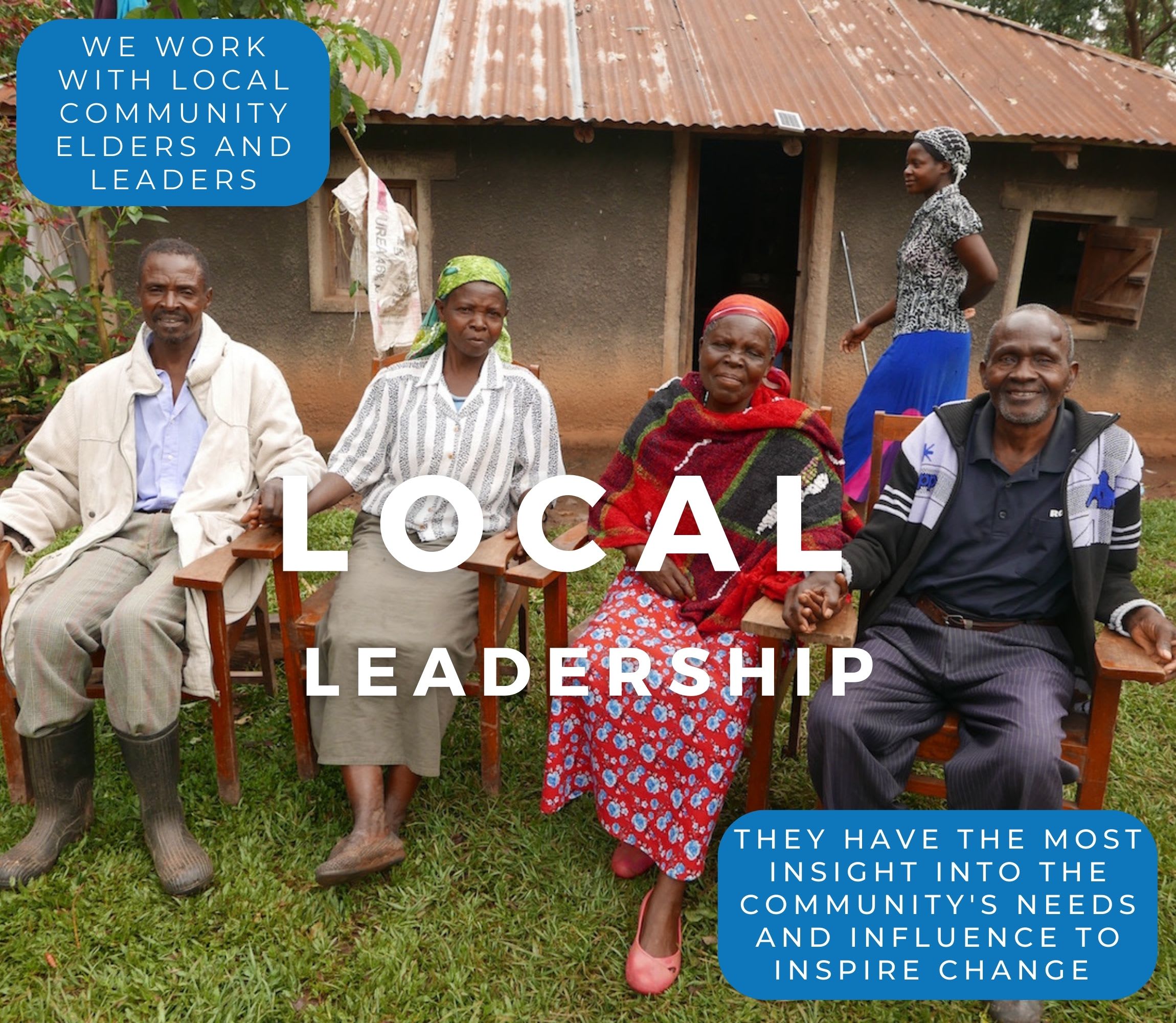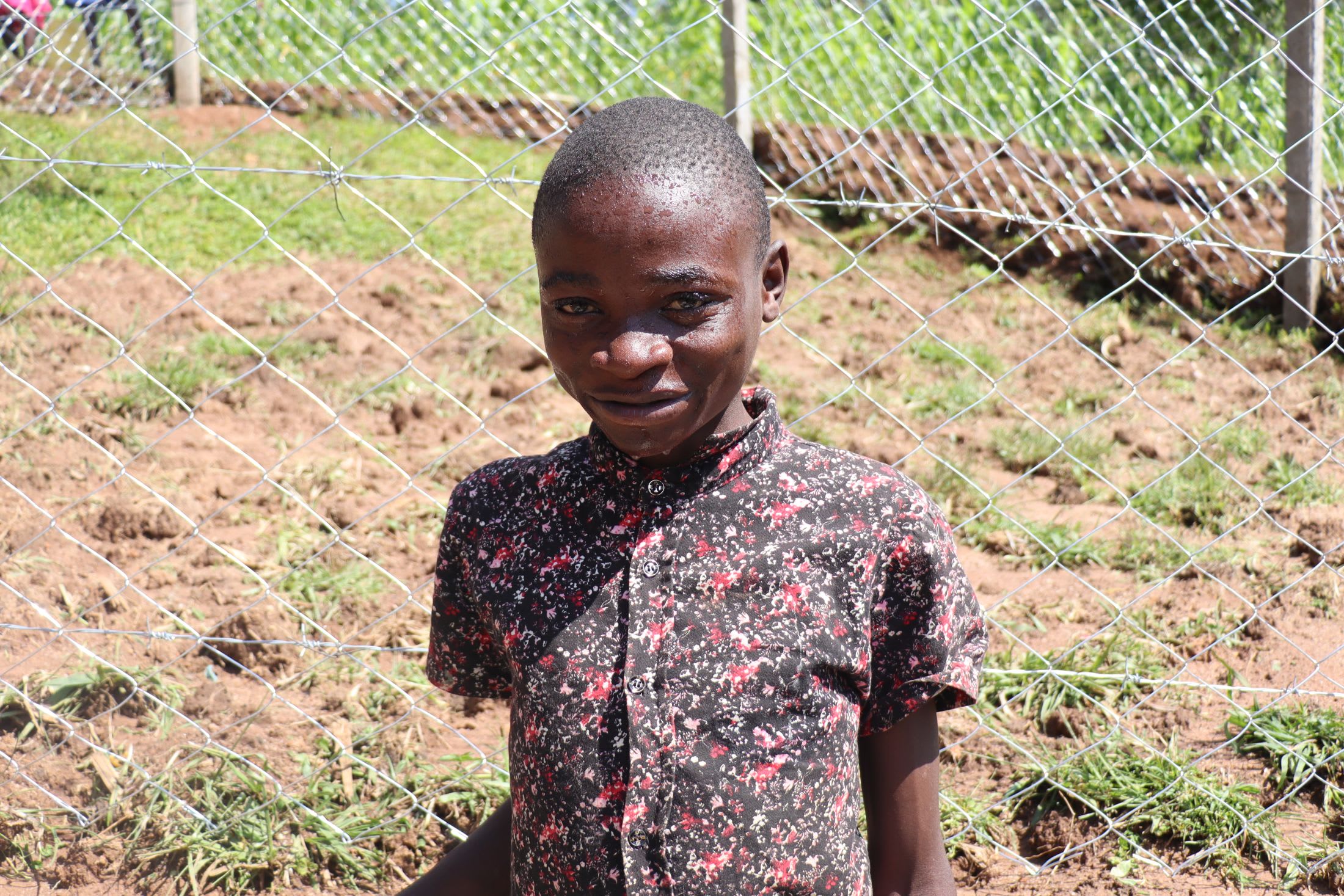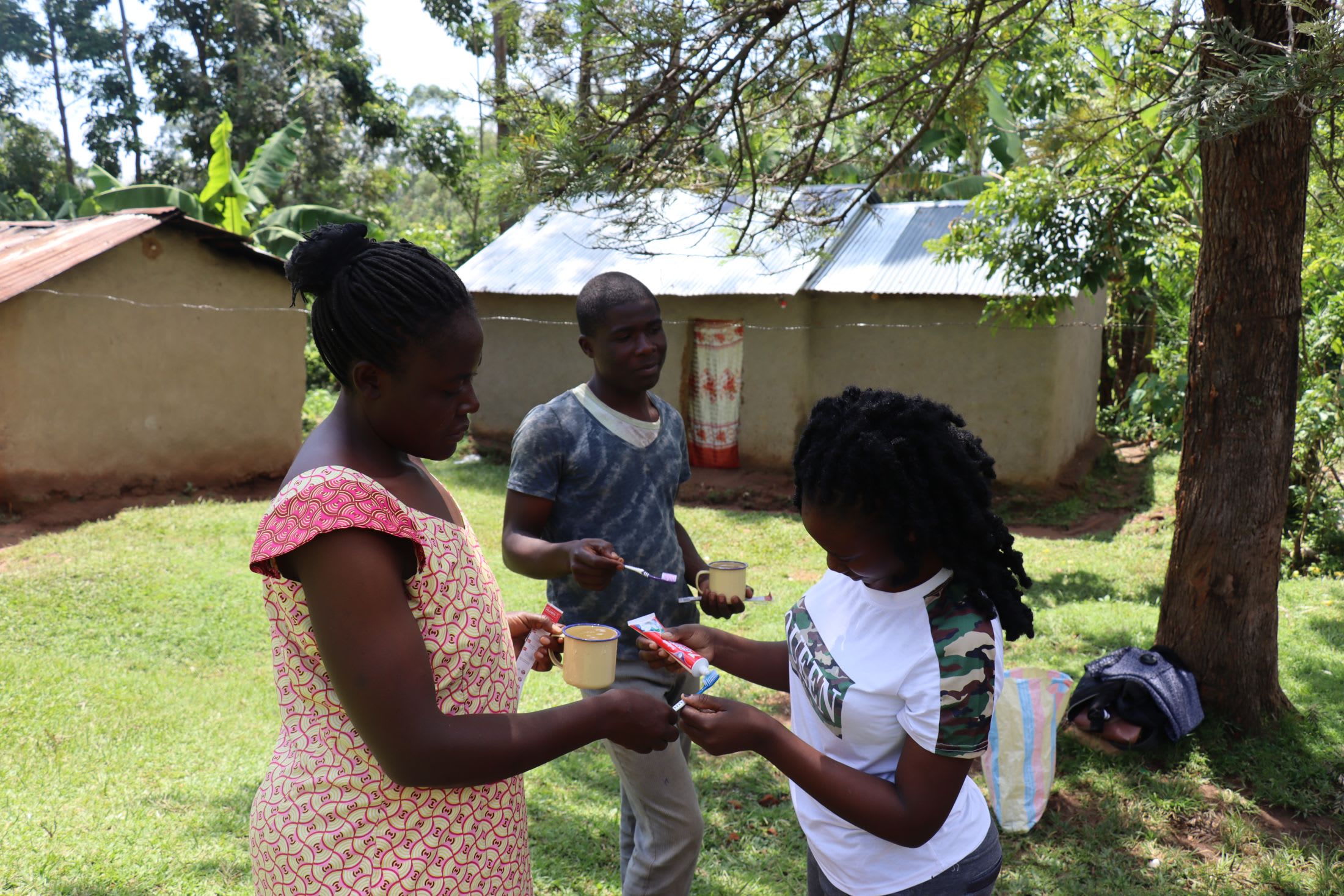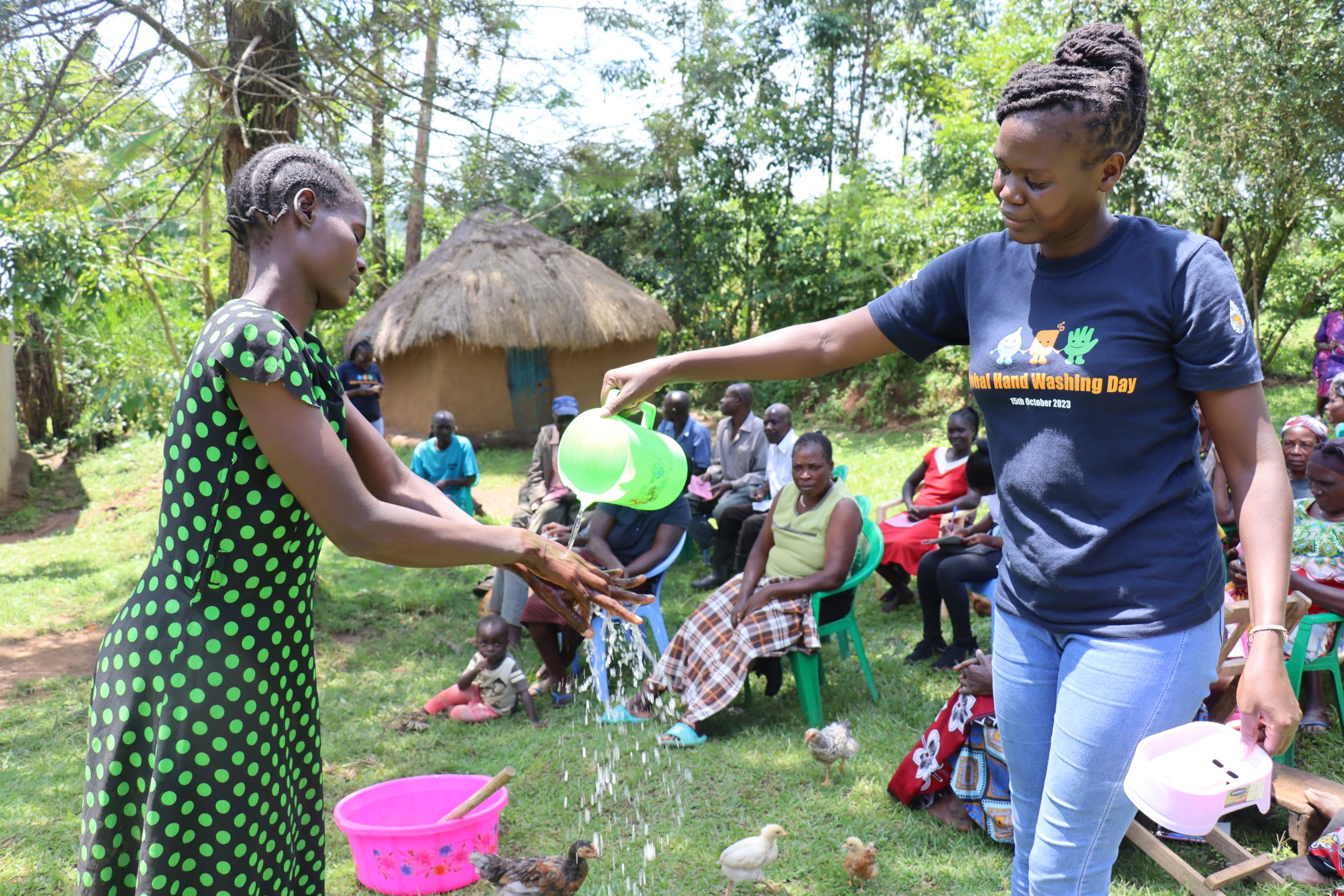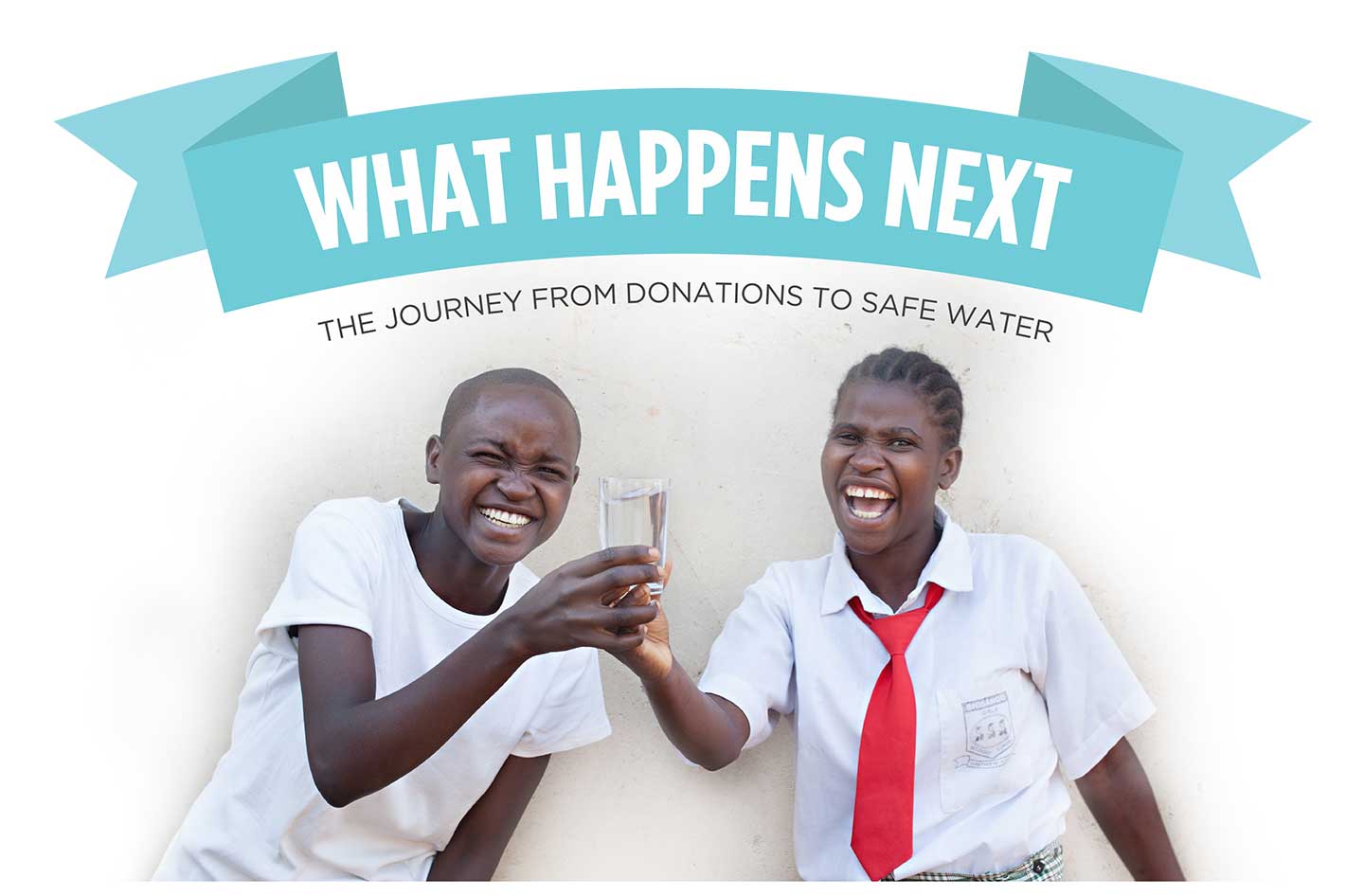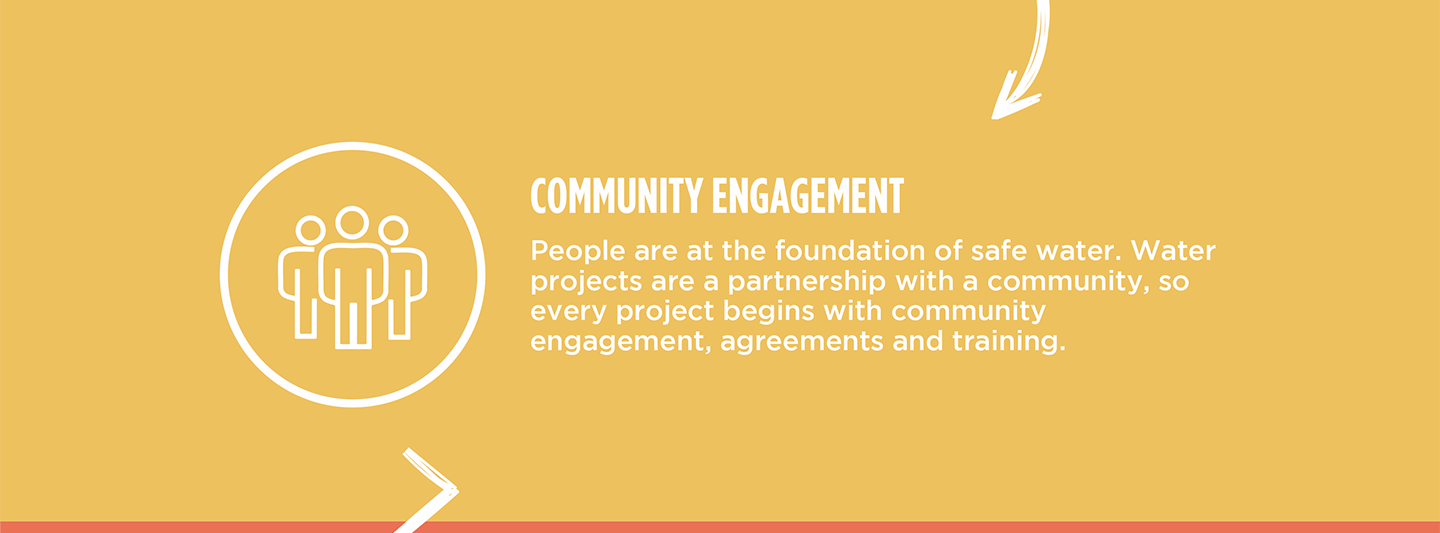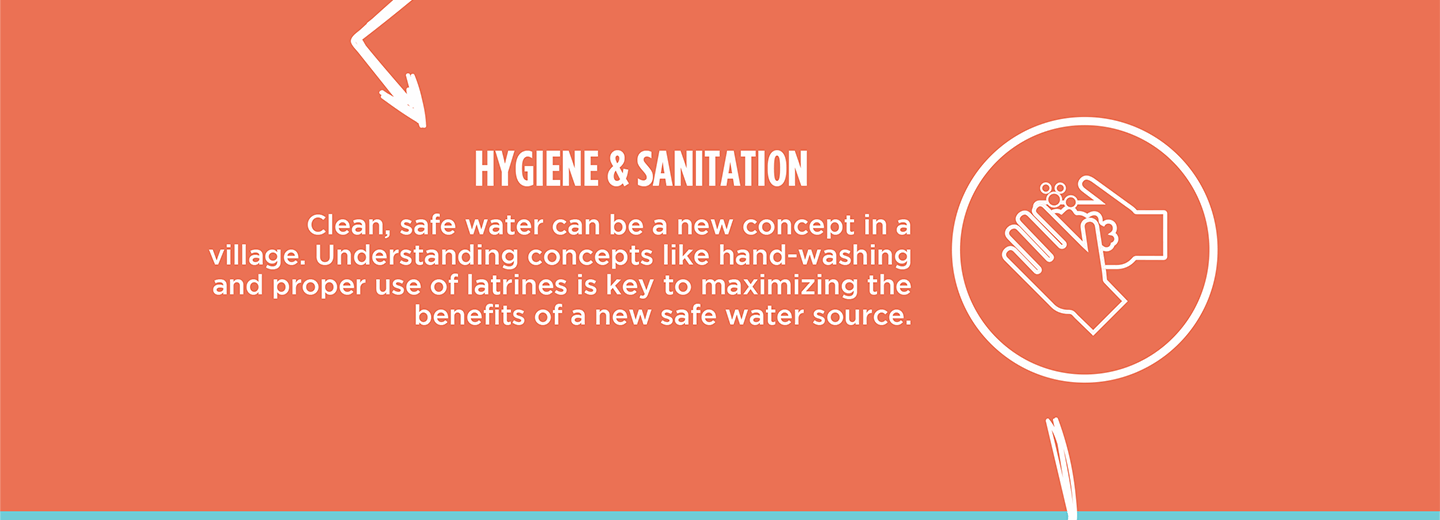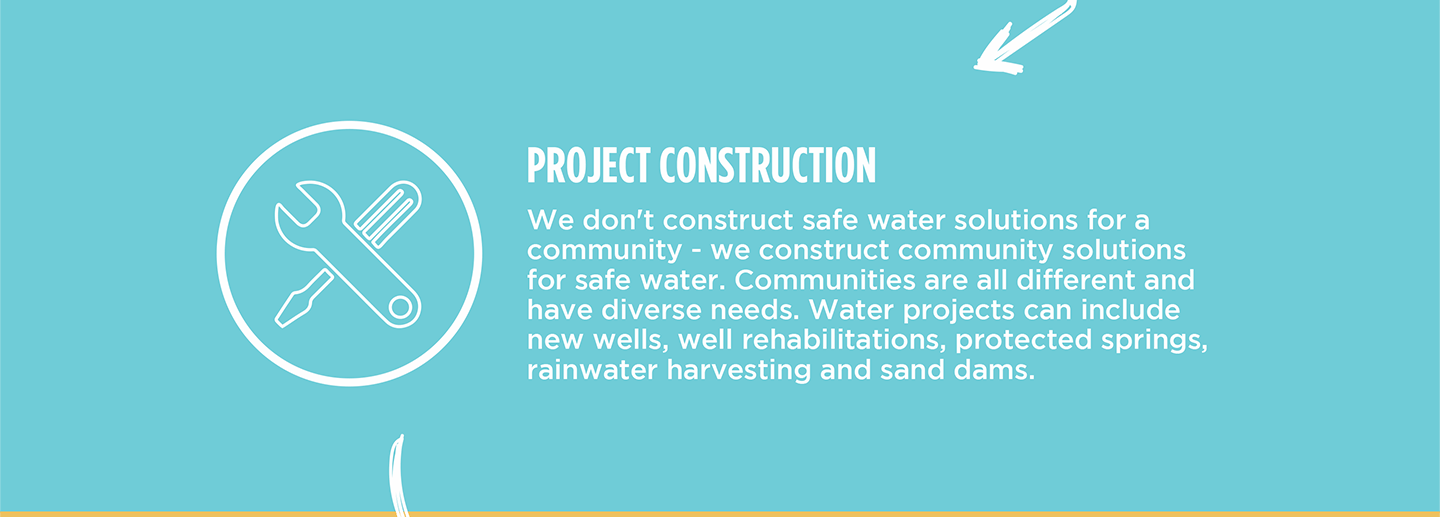The 378 people of Nambwaya Community struggle each day to collect the water they need to meet their daily needs. There are no tap water systems, boreholes, or water towers to rely on, so they must depend on Wakukho Spring for water.
People's first daily chore is to collect water, but because of the spring's poor condition, there are often long delays keeping them from other important things. This impacts families' livelihoods and the education of children, especially girls who miss school, to help with water collection and chores.

"When [it] rains, it's difficult for me to use a 10-liter jerrican to get water (because it is slippery). I have to use a 5-liter jerrican. This means I have to do more rounds to and from the spring to meet my quota of the day, which usually leaves me [too] tired [to] even do some school work, especially during [the] evenings," said 7-year-old Victor O., seen above collecting water.
"Wakukho Spring has provided a lifeline for the community for a long time, [but] over time, the spring has undergone tough weather conditions, natural aging, and [the effects of] human activity with [the] lack of proper supervision or anyone to perform monitoring and evaluation allowing [professionals] to perform [the] complicated maintenance operations [needed]. The quality of the spring has greatly degraded, posing health and physical risks. Accessing the spring is challenging, especially for the young ones," said field officer David Muthama.
"Even though the spring has naturally aged, it is visible [that] the community has tried [to] look after the spring. The drainage system is clean, which shows the evidence. [Redoing] the construction [of] the spring and putting up a fence will have a positive impact on the community. Also, taking [on the] responsibility [for] the monitoring and evaluation will [help] solve the problems of Wakukho Spring," continued David.

"The water point is not safe. I have to undergo financial difficulty when I have to buy tools and medication to remove jiggers from my feet. I know I usually get them from the water point when fetching water. I have to step into the water [barefoot]. That's when the insects get an opportunity to get into my feet," said Catherine Rapando, shown above.
The protection of the spring is crucial as it will allow community members to access safe water. This would promote the community's overall well-being and enable them to carry out their daily tasks with ease and efficiency. Thus, protecting the spring is not only vital for the health and safety of the community but also contributes to their productivity and quality of life.
The Proposed Solution, Determined Together...
At The Water Project, everyone has a part in conversations and solutions. We operate in transparency, believing it benefits everyone. We expect reliability from one another as well as our water solutions. Everyone involved makes this possible through hard work and dedication.
In a joint discovery process, community members determine their most advantageous water solution alongside our technical experts. Read more specifics about this solution on the What We're Building tab of this project page. Then, community members lend their support by collecting needed construction materials (sometimes for months ahead of time!), providing labor alongside our artisans, sheltering and feeding the builders, and supplying additional resources.
Water Access for Everyone
This water project is one piece in a large puzzle. In Kenya, Sierra Leone, and Uganda, we're working toward complete coverage of reliable, maintained water sources that guarantee public access now and in the future within a 30-minute round trip for each community, household, school, and health center. One day, we hope to report that this has been achieved!
Training on Health, Hygiene & More
With the community's input, we've identified topics where training will increase positive health outcomes at personal, household, and community levels. We'll coordinate with them to find the best training date. Some examples of what we train communities on are:
- Improved hygiene, health, and sanitation habits
- Safe water handling, storage & treatment
- Disease prevention and proper handwashing
- Income-generation
- Community leadership, governance, & election of a water committee
- Operation and maintenance of the water point
Chlorine Dispensers
Installing chlorine dispensers is an important piece of our spring protection projects. Protecting a spring provides community members with an improved water source, but it doesn’t prevent contamination once the water is collected and stored. For example, if the water is clean and the container is dirty, the water will become contaminated.
We ensure that each chlorine dispenser is filled with diluted chlorine on a consistent schedule so that people can add pre-measured drops to each container of water they collect. That way, community members can feel even more confident in the quality of their water.
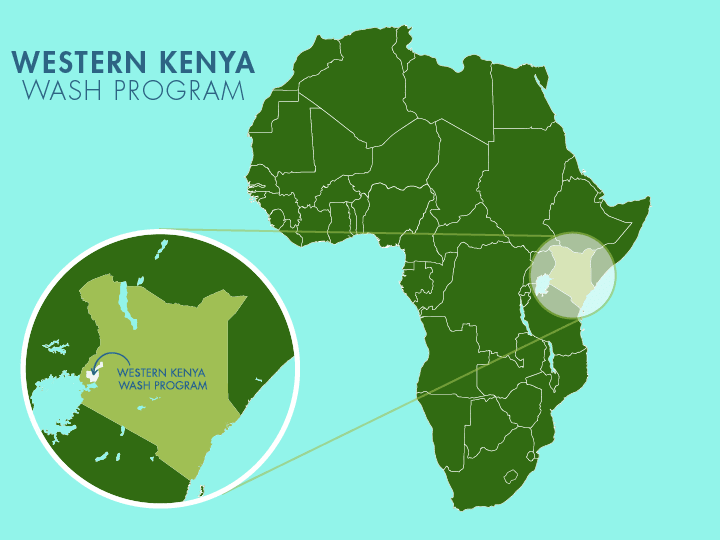
 Protected Spring
Protected Spring
 Rehabilitation Project
Rehabilitation Project

